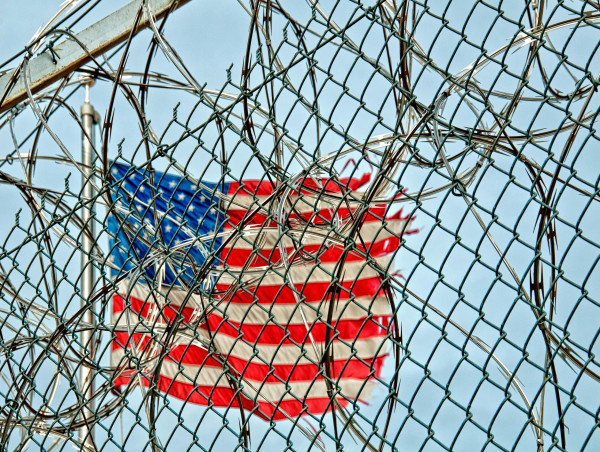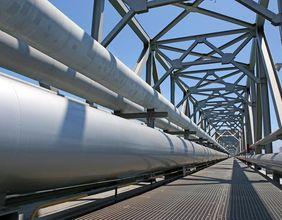The phrase “America First” was first used as Donald Trump’s campaign slogan. Now, it is the defining feature of US foreign policy.
It is also the reason why the US is moving away from Europe, leaving NATO and the European Union to rethink their future without guaranteed American support.
This change is now obvious, with the US aid to Ukraine stalling and NATO unity under pressure.
Europe’s military dependence, economic vulnerabilities, and internal divisions are now exposed.
But this shock may also be the catalyst Europe needed to become a more unified and self-reliant power.
Why is America turning away from Europe?
Since 1945, the transatlantic relationship has been the cornerstone of Western security. Under Trump, that relationship is fraying fast.
The US is moving to reduce its military footprint in Europe, threatening NATO commitments, and pulling back support for Ukraine.
Reports suggest Trump has discussed withdrawing American troops from key regions like the Baltics, while leaving Ukraine out of recent peace talks with Russia.
Trump has also openly blamed Ukraine for the war; a claim unsupported by facts and rejected even by many of his own supporters.
Polls show that most Americans still favour NATO. A Gallup survey finds that public support for the alliance remains stable.
Yet foreign policy barely registers as a concern for US voters when asked about the country’s top priorities.
This opens up an opportunity for the Trump administration to reshape global policy without significant domestic pushback.
But Trump’s shift is not just tactical. It shows a broader ideological retreat to isolationism, reminiscent of pre-World War 2 America.
Trump’s “America First” echoes Charles Lindbergh’s movement of the 1930s, which argued that the US should leave Europe to handle its own affairs and focus solely on defending the Western Hemisphere.
In practice, this means leaving Europe exposed to external threats, particularly from Russia, while Washington refocuses inward and looks for ways to cut deals with former rivals.
Why is Trump siding with Russia?
There are two competing theories as to why Trump is now pivoting towards Russia.
One is geopolitical. Trump may be attempting a “reverse Kissinger” strategy. That means courting Russia to weaken China’s growing power in Asia.
During the Cold War, Henry Kissinger played China off against the Soviet Union.
Trump might hope to flip Russia or at least push it into neutrality in a future US-China conflict.
The second theory is ideological. Trump’s inner circle increasingly views Russia as a cultural ally.
In American right-wing media, Russia is often portrayed as a defender of “traditional values.”
Trump allies like Tucker Carlson and Steve Bannon regularly praise Russia’s conservative stance on gender, family, and religion.
The narrative casts Russia as a stronghold against Western liberalism and social progressivism, sometimes described as “wokeness.”
Europe, on the other hand, is viewed with suspicion by parts of the American right.
With its secular societies, social welfare models, and liberal values, Europe has become a cultural opposite.
Regardless of which theory holds more weight, the result is the same.
Trump’s administration sees Russia as a partner worth accommodating, even at the expense of historic European allies.
Europe’s reluctant turning point
Trump’s pivot is painful for Europe, but also overdue. For decades, Europe underinvested in defence, relying on the US security umbrella.
Now, that safety net is being pulled away.
Germany is leading the response. With Friedrich Merz poised to replace Olaf Scholz as chancellor following the recent elections, Berlin is preparing a large increase in defence and infrastructure spending.
The economic impact is already being felt. Goldman Sachs raised its forecast for German GDP growth in 2027 by a full percentage point, citing the expected boost from defence and public investment.
More importantly, Merz’s stance aligns him with France’s Emmanuel Macron, who has long advocated for “strategic autonomy”, where Europe would be less dependent on Washington.
The European Commission is also moving.
Ursula von der Leyen has outlined proposals for up to €800 billion in additional defence spending, using a new EU lending facility and changes to fiscal rules that would exclude defence from national borrowing limits.
For the first time since the Cold War, Europe appears serious about building its security apparatus.
The economic battle: can Europe catch up with the US?
Security is only part of the story. Europe also faces an economic challenge.
Reports by former Italian prime ministers Mario Draghi and Enrico Letta have laid bare Europe’s lag in innovation, productivity, and capital formation compared to the United States.
The European Union has long struggled with internal market fragmentation, which drags on growth.
According to IMF data cited by Draghi, barriers inside the EU create the equivalent of a 45% tariff on intra-European trade.
Brussels is pushing ahead with efforts to deepen the single market, especially in financial services, energy, and digital sectors.
A rebranded “savings investment union” aims to channel Europe’s large savings surplus — much of which is currently invested in the US — into domestic growth projects.
But the obstacles are familiar. National protectionism, slow-moving institutions, and political fragmentation are hard to overcome.
The Trump-triggered crisis may accelerate change, but success will require breaking long-standing habits.
The UK factor: a new bridge or more friction?
There is one unexpected upside. Brexit-era tensions between London and Brussels are easing.
The UK is now a key partner in Europe’s response to the Ukraine war, and many EU states are calling for a deeper UK-EU security pact.
Keir Starmer’s diplomatic push has helped. British firms may soon gain access to joint EU defence procurement programs, even though the UK remains outside the bloc.
However, some EU members like France, still oppose giving the UK full access to shared defense funds.
The situation could worsen if Trump targets the EU with trade tariffs and pressures the UK to align with Washington over Brussels.
Europe’s leaders should make decisions they have long delayed, from rearming to restructuring economic policy.
Whether this crisis drives real integration or exposes deeper fractures remains to be seen.
The West may be splitting. But in doing so, it may also be setting the stage for Europe’s reinvention.
The post How Trump’s “America First” is forcing Europe to grow up appeared first on Invezz





